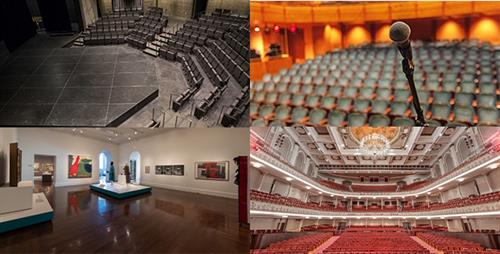posted by Alecia Kintner ON
Apr 23, 2020

The Cincinnati region has been hit hard by a once-in-a-lifetime pandemic. The economic impacts are all around us, whether you look at surging unemployment or plummeting restaurant and hospitality revenues.
The arts and cultural organizations and venues in our region were one of the first industries affected economically, with venue and performance closures during early March when mass gatherings were prohibited. While this was the right thing to do for the health and wellbeing of all in the midst of the COVID-19 pandemic, the ramifications of this industry hardship on the region are enormous.
In the Cincinnati MSA, comprised of 15 counties covering Ohio, Northern Kentucky and Southeastern Indiana, there are more than 225 nonprofit arts organizations employing more than 10,000 individuals, according to ArtsWave data. This does not include thousands of individual artists and performers who are not on an organizational payroll and who work contractually or on a freelance or gig basis.
According to the most recent Arts & Economic Prosperity research report from Americans for the Arts, nonprofit arts and cultural organizations employ .83% of the U.S. workforce, an occupational category that is a little smaller than teachers (1.00%) and considerably larger than police officers (.48%), lawyers (.44%), farming/fishing/forestry (.33%), firefighters (.23%) and computer programmers (.21%).
The business model for the arts industry makes it especially vulnerable in this kind of crisis. Arts and cultural organizations depend on two primary sources for revenues to survive and create impact: earned income from operations (such as ticket sales, tours and school contracts), and contributions from businesses, foundations and individuals.
Earned income lost due to cancellations this spring is not likely to be recovered, with serious consequences. Annually, earned revenue typically represents about 50-60% of most arts organizations’ budgets. The other half of the arts revenue pie is contributed income, of which the tens of thousands of donors to the ArtsWave Campaign comprise a significant slice. There are more than 40 cultural institutions for which ArtsWave funding represents 4-10% of their operating budgets, and in most of these cases, ArtsWave is the largest single donation source. In total, more than 100 organizations receive annual operating budget or project support from ArtsWave. The 2020 campaign is not yet at its goal, further exacerbating the financial crisis facing the arts sector.
As in other small and mid-sized businesses in our community, the financial and emotional workforce toll on the nonprofit arts sector and the Cincinnati region’s creative economy is of great concern. The impacts on our broader economy are also significant. According to estimates from Americans for the Arts, Greater Cincinnati’s arts and culture sector has an economic impact of nearly $300,000,000 a year.
ArtsWave is focused on helping the Cincinnati region’s arts sector weather the coronavirus crisis. Since the performance cancellations and closures of venues, ArtsWave has accelerated $2.4 million in grant payments for 44 organizations which receive operating support revenues, expanded its $10,000 Working Capital Bridge Loans for eligible nonprofit arts organizations, and provided a fast-tracked round of Emergency Arts & Culture Grants to 47 small and mid-sized organizations. The next phases of response and recovery are being developed by ArtsWave in close consultation with arts leaders and boards. The extent of our response will depend, in part, on the outcomes of the ArtsWave Community Campaign.
In addition, ArtsWave has created a Coronavirus Arts Hub, which arts organizations are using to communicate virtual and online arts experiences, as well as postponement, cancellation and rescheduled arts events happening after venues can safely reopen.
The 2020 ArtsWave Campaign kicked off January 30, 2020 and is currently at $8.4 million, 68% of its $12.4 million goal. The greatest way that the community can help position the arts to return with their customary vibrancy is to support the Campaign. The public can help fund these and additional, evolving efforts at artswave.org/give.